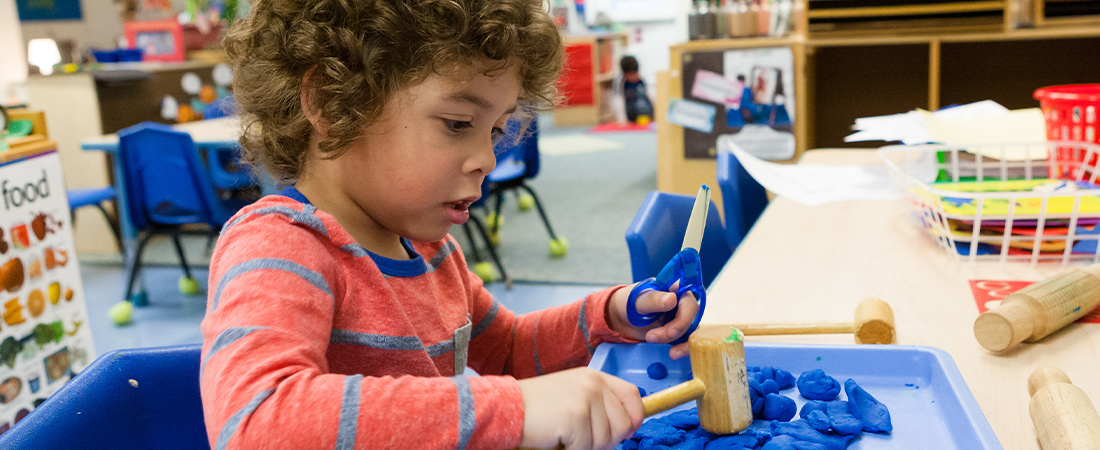Improving Universal Pre-K in Vermont

In 2014, legislators in Vermont passed a landmark bill establishing universal pre-kindergarten (pre-K) in the state. The legislation sought to reduce gaps in kindergarten readiness and made all 3-, 4-, and non-kindergarten 5-year-olds eligible for 10 hours of publicly funded pre-K for 35 weeks each year.
However, implementation of this law has not been smooth. Since 2017, EDC researchers have been working with Vermont lawmakers to identify the impact and unintended consequences of the state’s bold educational initiative—an example of how EDC’s collaborative approach to research is helping to inform public policy.
The research partnership between EDC and Vermont lawmakers began just after universal pre-K legislation began implementation, says EDC’s Clare Irwin. Researchers at EDC’s REL Northeast & Islands had heard about Vermont’s pre-K push and approached stakeholders with an idea: what about creating a research partnership to study the new law?
“They agreed that [such] a partnership would be beneficial to them,” says Irwin. “So we sat down with folks from the Agency of Education and the Agency of Human Services, both of which oversee universal pre-K, and we asked, What do you want to know? What’s helpful? What’s valuable?”
Together, they created a research agenda. Irwin then worked with Kyle DeMeo Cook, now an assistant professor at St. John’s University, to design a study that examined enrollment trends in universal pre-K. They spent a year analyzing data on 5,622 children across 282 qualified programs, looking for any patterns or trends, and then presented these findings to the state legislature in April, 2019. (The full report is scheduled to be published this winter.)
“Lawmakers were generally glad to have this information,” says Irwin.
Challenges arise
While this research was underway, Vermont began to experience some challenges to implementation. The state uses a “mixed delivery” system, whereby eligible children can attend home child cares, private child care centers, or public pre-schools programs free of charge for 10 hours per week. Those providers and school districts are then paid through the state’s education fund. Yet individual providers complained that accounting systems were complex and inefficient, leading to unnecessary complications—and delays—in getting paid.
The state also raised the quality requirements for providers to ensure that all children enrolled in universal pre-K programs were receiving a high-quality education. But those changes, which increased licensure and staffing requirements for providers, also put a financial strain on home child cares and private preschools.
Finally, some legislators heard mixed reviews from parents, school districts and private providers. While parents loved the availability of free, universal pre-K, the 10-hour cap created scheduling and transportation challenges, especially for working parents. The accounting system between school districts and private providers was also criticized as being awkward and redundant.
Legislators didn’t know how to respond, says Vermont Representative Kate Webb, who chairs Vermont’s Education Committee.
“In 2018, talks broke down between advocates [and] legislators as to how to address some of these challenges,” she says. “It was clear that we needed a break as well as an outside voice to help us refocus. EDC was that voice.”
With the REL research still underway, EDC won the state contract to evaluate the law with a more holistic lens. How could services be improved and streamlined? How was it impacting private and public providers? And was universal pre-K reaching all eligible students, or were some communities being left out?
Irwin says that EDC’s previous work on universal pre-K enabled them to respond quickly.
“We knew the data, we knew the policy context, and we understood the players,” Irwin says. “We had a plan in place for executing what was, essentially, a two-year evaluation in an eight month timeframe.”
That evaluation was released in July 2019 and contained a number of important findings. For example, the evaluation found that public pre-K programs had a “marked advantage” in hiring licensed educators because they could afford to pay more than private programs—a trend that, over time, could lead to “a concentration of the highest quality pre-K classrooms in public schools.”
But it also found that Vermont was achieving its primary goal of expanding access to high-quality early education through universal pre-K. Thirty percent of families surveyed indicated that they would not have sent their children to any early child -care program if they did not have access to universal pre-K.
And, perhaps most importantly, the evaluation included some possible solutions to emerging challenges, including scheduling, licensure, and oversight. These were intended to give lawmakers some ideas for how to break the deadlock and move forward.
As universal pre-K enters its third year of implementation, Webb is hopeful that this will be the year that improvements finally move forward. While some legislators have recommended scrapping the program and starting anew, Webb believes that EDC’s research will help the state make targeted improvements and refinements.
“It is my intention to use EDC’s research to help drive a more productive conversation with stakeholders in 2020,” she says. “Emerging brain research, school readiness, social-emotional learning, and the needs of working families tell us it is incumbent upon us to do so.”